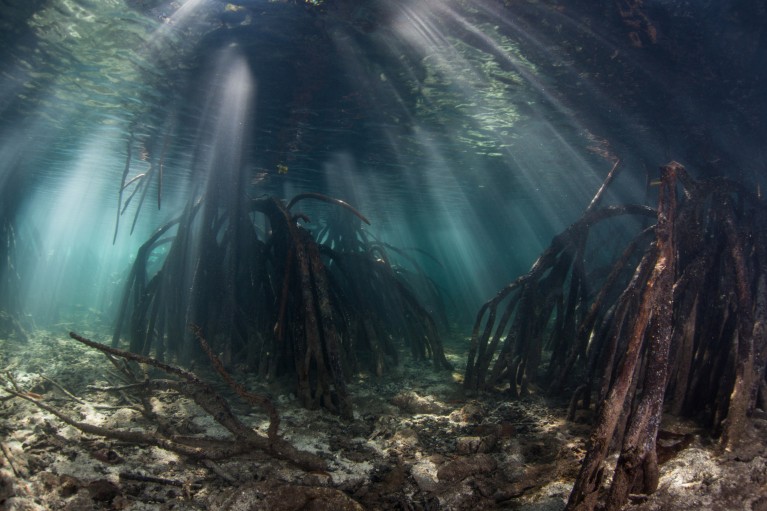
Beams of sunlight descend into a shadowed mangrove forest amid a tropical equatorial region, possibly the center for marine biodiversity.Credit: Velvetfish/iStock/Getty Images Plus
Biodiversity loss continues to rise at an unprecedented rate in Africa. While the continent’s underrepresentation in the global genomics landscape is well documented, a new initiative hopes to close this gap and safeguard the continent’s biodiversity. The project will build on genomics resources to help breeders and conservationists on the continent. With a hefty price tag of US$1 billion, its champions tell Nature Africa that its gains are worth the price.
In a comment published in Nature in March 2022, ThankGod Echezona Ebenezer and his colleagues argued for the importance of the African BioGenome Project (AfricaBP), an Africa-focused and led genomics initiative that could provide locally relevant insights into biodiversity in Africa.
A repository of genome data
The goal for AfricaBP is to create a database of reference genomes in Africa, for Africa. It aims to sequence the genomes of 105,000 endemic species: plants, animals, fungi, protists, and other eukaryotes. It asserts it involves 109 African scientists (87 of them working in Africa) and 22 African organizations.
There are also implications for resilient and sustainable food systems in addition to informing an Africa-wide biodiversity conservation.
Beyond projecting Africa as a region with species that are not found elsewhere, the initiative also believes that the continent has contributions to make regarding conservation practices and measures to promote and safeguard biodiversity.
“There is the need for communities to infuse that cultural knowledge into genomic practices and that will help the process of better conservation,” Ebenezer said.
The tasks ahead
Even though it aims to address the dearth of genomic information from Africa, it is not all smooth sailing for the project. There are numerous hurdles when it comes to proprietary ownership by African governments and national regulators. For example, the AfricaBP hosted a forum last month where representatives from the Malawian government engaged the speakers on benefits and potential patent issues in the country.
But Ebenezer finds such conversations are normal and expected, considering protocols are required to facilitate truly cross-border efforts that will ensure the success of the project. “You don't just take samples from a country like Malawi and the people are left without anything,” he said.
The researchers behind the project want to sequence 2,500 indigenous African species, including the Boyle’s beaked blind snake (Rhinotyphlops boylei) from southern Africa and the red mangrove tree (Rhizophora mangle) from Nigeria. But if it is to meet its targets in its planned ten years time frame, the project must be rapidly scaled up. and an annual price tag of US$100 million will be required. Its leaders are hoping to attract funding from funders within and outside Africa, such as the African Union Commission, the African Academy of Sciences and the US National Science Foundation.
He however admitted getting the fund could be an uphill battle considering the prioritization of response to infectious diseases and several other competing interests and commitments of potential funders.
